At a glance
Expert’s Rating
Pros
- Fast 40Gbps USB4 performer
- Ruggedized and weatherized to IP54
- Fantastically easy to pick out of the crowd
Cons
- Type-C port cover isn’t captive
Our Verdict
The Rugged SSD4 is the fastest 40Gbps USB4 drives I’ve tested to date. It’s also IP54 rated and orange. We like it.
Price When Reviewed
This value will show the geolocated pricing text for product undefined
Best Pricing Today
Price When Reviewed
1TB: $135 I 2TB: $250 I 4TB: $480
Best Prices Today: LaCie Rugged SSD4

I’ve always enjoyed LaCie’s use of the friendly color orange in many of the company’s external storage devices. So I was happy to open the Rugged SSD4 box and spot the familiar joyous hue adorning the device. That it’s super-compatible 40Gbps USB4 and fast-as-all-get-out didn’t hurt my mood either.
Read on to learn more, then see our roundup of the best external drives for comparison.
What are the LaCie Rugged SSD4’s features?
Beyond the USB4 I’ve already rattled on about, the Rugged SSD4 is a silver and white rectangle approximately 3.75-inches long, 2.25-inches wide, and half an inch thick without its jacket. The orange silicone jacket extends that to around 4.15-inches long, 2.65-inches wide, and 0.75 inches thick. Weight is a little under 4 ounces.
There’s also an orange silicone plug that covers the Type-C port on the end of the unit, but in my only nit about this drive — it’s not captive. Not captive means easier to lose — even if it’s bright orange. There’s also a power/activity light next to the USB port and you can see it through the jacket.
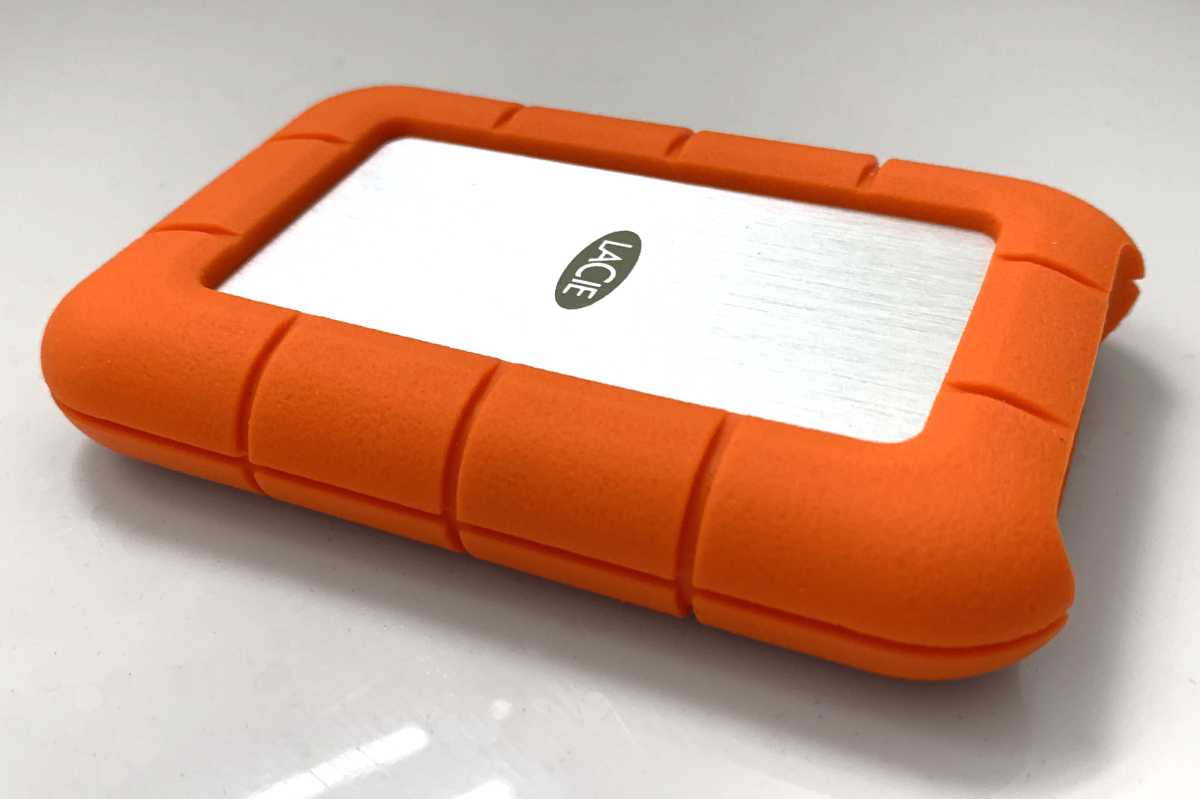
Besides brightening up your day, the nice thing about the orange color is that it stands out. If you’re prone to misplacing things, especially outside, orange is much easier to spot than most colors.
The Rugged SSD4 is IP54 rated, meaning that it can withstand dust as well as water spray. However, having seen hundreds of IP-rated designs, I think you’d be okay with even dropping the Rugged SSD4 in a bucket of water — assuming the end cap is in place. Not that I’m recommending it, mind you. You’re on your own if you do.
As to such a situation, LaCie (Seagate) warranties the drive for three years and also offers free data recovery. Make sure you dry the unit thoroughly first, as water dripping out on the company’s test station might void the guarantee — and the company’s good will.
How much does the LaCie Rugged SSD4 cost?
Although not cheap, the Rugged SSD4 is affordable given the performance, and a lot less than the 80Gbps competition including LaCie’s own Thunderbolt 5 Rugged SSD Pro5. The 1TB version is $135, the 2TB is $250, and $480 for 4TB model we tested.
How fast is the LaCie Rugged SSD4?
Pretty darn fast, I’m here to tell you. The Rugged SSD4 is the speediest 40Gbps USB4 SSD I’ve tested overall, though not by a ton. In the real world, it’s also competitive with the 80Gbps drives we’ve tested under most circumstances.
I’ve included LaCie’s own Rugged SSD Pro5 to baseline the Rugged series, but it’s an 80Gbps Thunderbolt 5 SSD. Hence the massive advantage in a couple of synthetic benchmarks. Overall, however, the performance gap isn’t nearly as wide as you might think.
Note that I now use FastCopy in transfer tests as it’s far faster than Windows Explorer at transferring files, though the advantage is more apparent with internal PCIe 4.0/5.0 SSDs than with external ones. Note that optimal performance requires disabling real time virus checking and setting your external SSD for maximum performance in Disk Management.
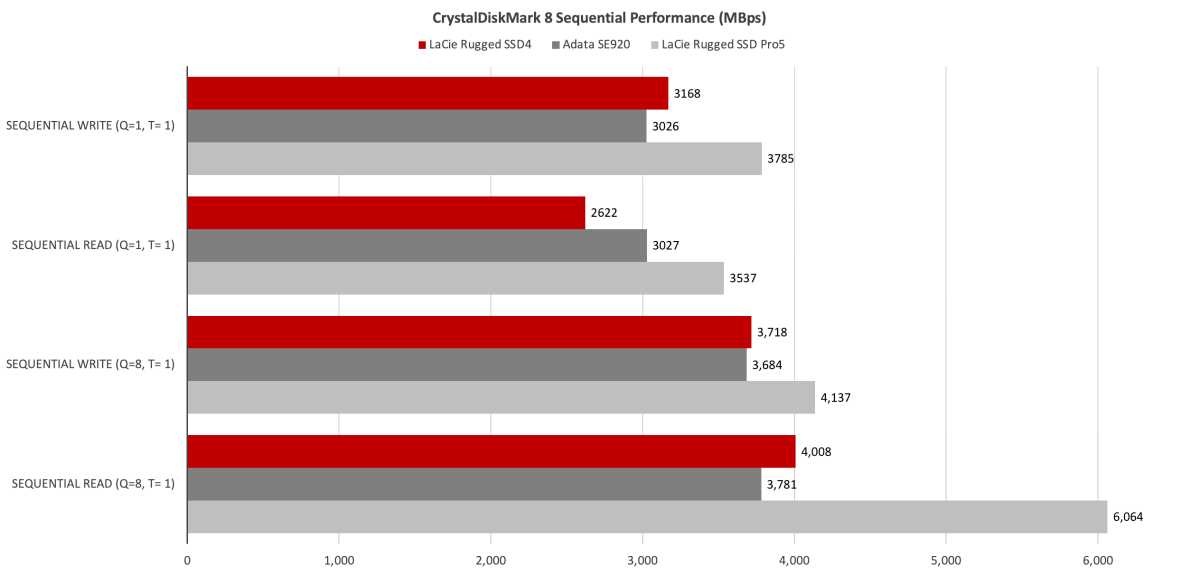
The Rugged SSD4 outstripped the Rugged SSD Pro5 in two of CrystalDiskMark 8’s 4K tests, falling short in two others. Note that all these results are from retests on our new test bed, and may not match the numbers in the older reviews.
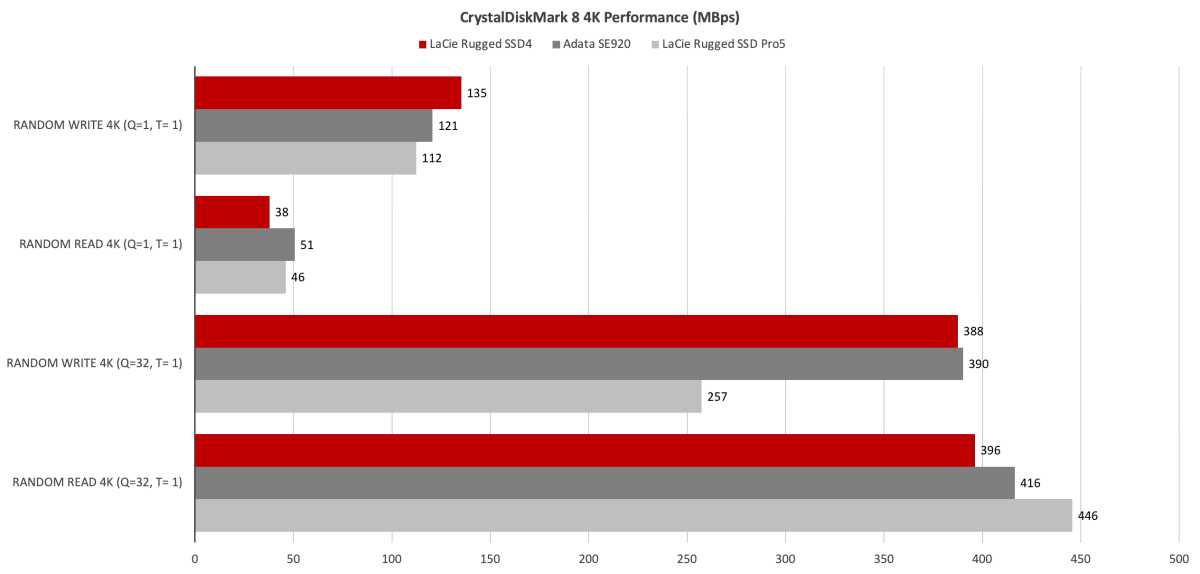
Yes, the Adata SE920 is aces at real-world transfers under Explorer, and the Rugged SSD4 managed to also outperform the Rugged SSD Pro5 in two tests in Explorer. We weren’t expecting that. Then again, it’s a newer drive. The industry moves fast.
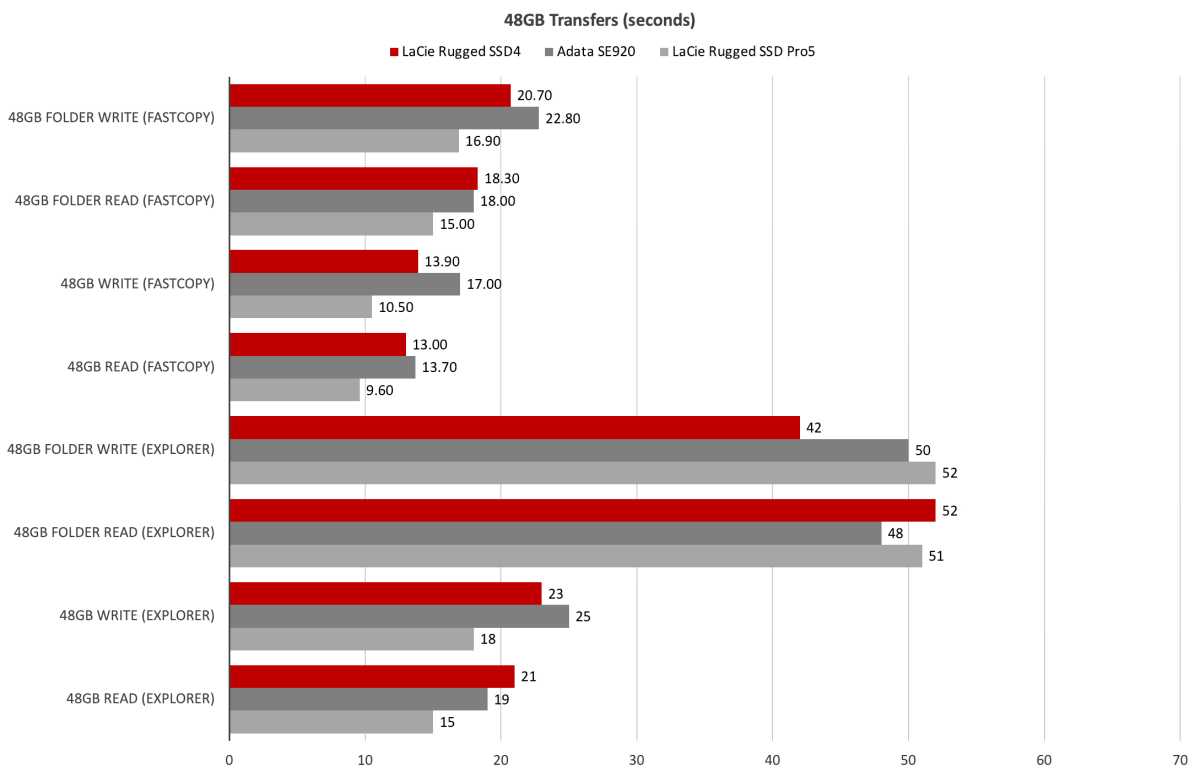
Again, the newer Rugged SSD4 actually beat the Pro5 in both Explorer and FastCopy when writing 450GB. Go figure.
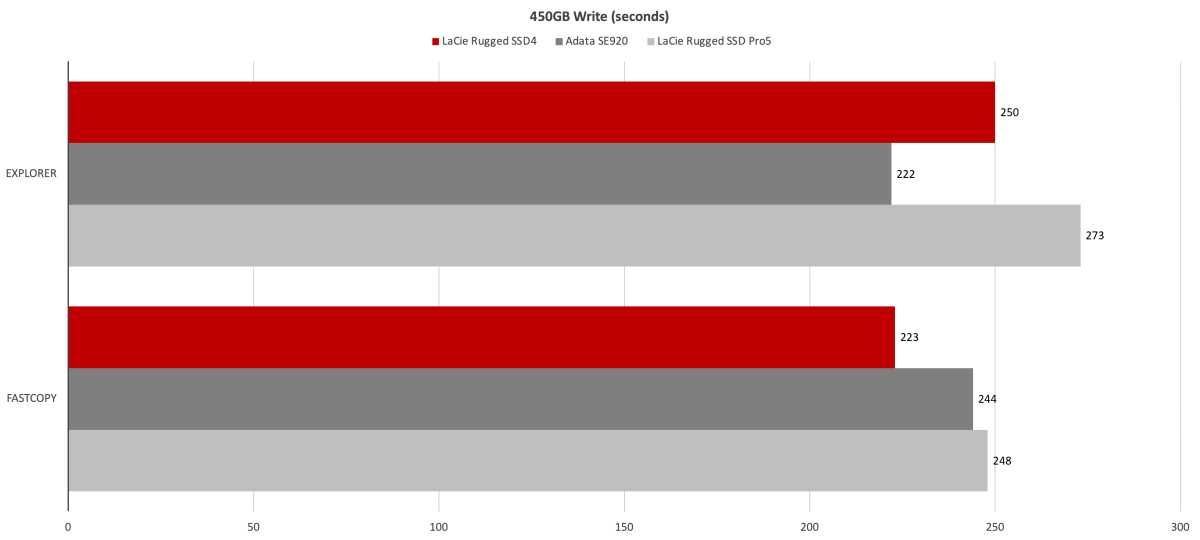
Note that I banged on the Rugged SSD4 hard trying to get it to slow down its write pace, writing several 950GB files to it consecutively. It never dropped below 1.65GBps. Sweet, and great for videographers. The vast majority of SSDs will drop to 5,000- to 800MBps.
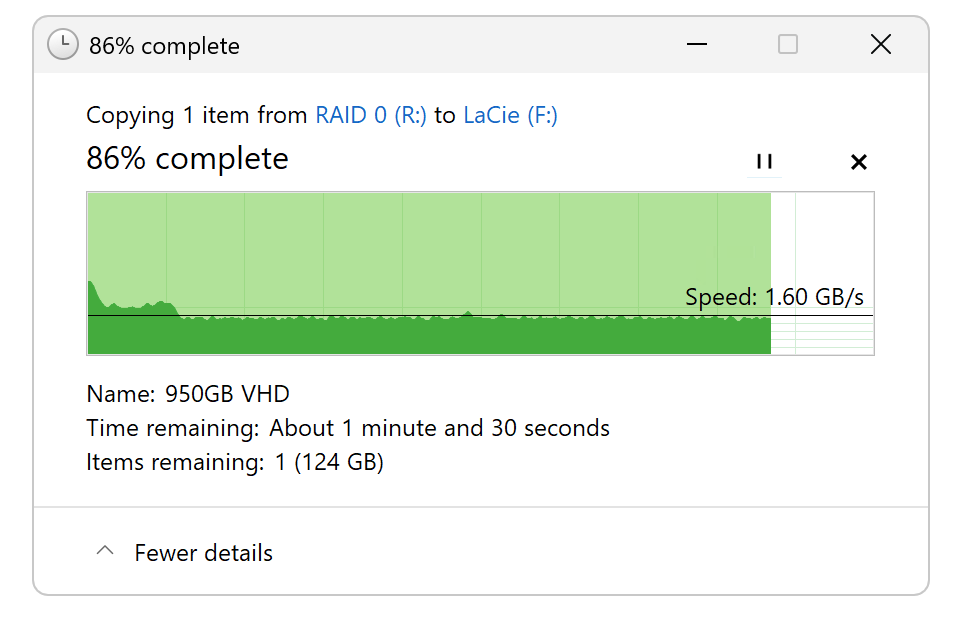
Overall, the Rugged SSD4 is a great performer and in the real world outperformed its far pricier cousin.
Should you buy the LaCie Rugged SSD4?
If you’re looking for the best performing 40Gbps USB4 SSD on the market — yes. If you’re looking for a ruggedized SSD that you can plug into just about anything — yes. If you like the color orange — yes.
On the other hand, if performance is paramount, the soon-to-be-reviewed (Macworld) 80Gbps OWC 1M2 80G is the fastest external SSD I’ve tested. Albeit at a much, much higher price.
How we test
Drive tests currently utilize Windows 11 24H2, 64-bit running off of a PCIe 4.0 Samsung 990 Pro in an Asus Z890-Creator WiFi (PCIe 4.0/5.0) motherboard. The CPU is a Core Ultra i5 225 feeding/fed by two Crucial 64GB DDR5 4800MHz modules (128GB of memory total). Both 20Gbps USB and Thunderbolt 5 are integrated and Intel CPU/GPU graphics are used. Internal PCIe 5.0 SSDs involved in testing are mounted in a Asus ROG PCIe 5.0 M.2 adapter card and a HighPoint 7604A 16x PCIe 5.0 4-port M.2 adapter card.
We run the CrystalDiskMark 8.04 (and 9), AS SSD 2, and ATTO 4 synthetic benchmarks (to keep article length down, we only report one) to find the storage device’s potential performance, then a series of 48GB and 450GB transfers tests using Windows Explorer drag and drop to show what you’ll see under Window, as well as the far faster Xcopy and FastCopy to show what’s possible.
A 25GBps two-SSD RAID 0 array on the aforementioned Highpoint 7604A is used as the second drive in our transfer tests. Formerly the 48GB tests were done with a RAM disk.
Each test is performed on a NTFS-formatted and newly TRIM’d drive so the results are optimal. Note that in normal use, as a drive fills up, performance may decrease due to less NAND for secondary caching, as well as other factors. This issue has abated somewher with the current crop of SSDs with more mature controllers and far faster late-generation NAND.
Caveat: The performance numbers shown apply only to the drive we were shipped and to the capacity tested. SSD performance can and will vary by capacity due to more or fewer chips to shotgun reads/writes across and the amount of NAND available for secondary caching. Vendors also occasionally swap components. If you ever notice a large discrepancy between the performance you experience and that which we report, by all means, let us know.

